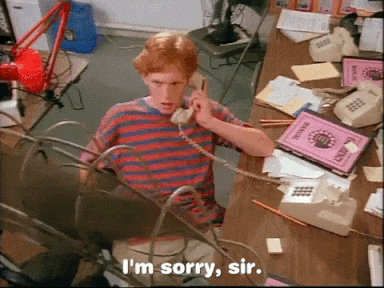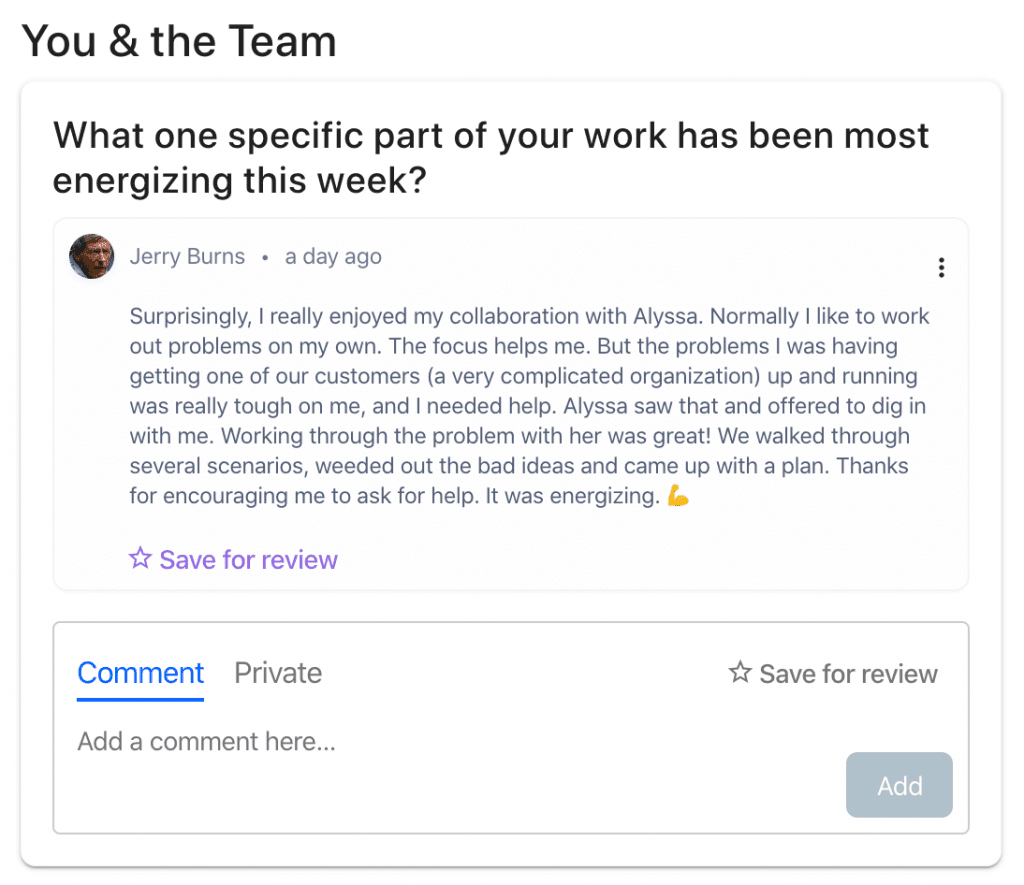As a manager, you show up to one-on-one meetings ready to dig deep into your employee’s problems, help them pursue their goals, and celebrate their achievements.
But sometimes, you’re faced with an employee who just. won’t. talk. They don’t bring their own agenda items to discuss. You can’t engage them on a personal level. And when you ask them direct questions about their work, the answer is usually “everything’s fine.”
When an employee replies to every one-on-one question with a monosyllabic answer, at best it means that you’re missing out on opportunities for growth and relationship building. At worst, it means they’re unhappy, disengaged, or lost. Naturally, you want to help, but you can’t solve problems you don’t know about. That’s why it’s so important for managers to learn effective communication strategies to get quiet employees to participate. Below, we’ll go through some techniques to push past “everything’s fine” until you get real answers.

Build a Communication Strategy That Matches Your Report
When it comes to effective communication strategies, there’s no one-size-fits-all approach. So the first step in getting quiet employees to participate is understanding how they communicate. There’s a world of difference between a reserved employee who is nervous about interacting with management and an aloof employee whose lack of engagement conveys apathy or hostility.
Establish a baseline. In your initial one-on-ones with an employee, ask questions to determine the level of communication they are comfortable with.
- Do they prefer to work with minimal oversight or have lots of interaction with a manager?
- When they feel stuck with a project, do they feel comfortable asking for help or do they need to be drawn out?
- How do they prefer to communicate and receive feedback? Via instant messaging, email, or face-to-face?
- How important is praise to them? How do they tend to respond to critical feedback?
An employee may tell you at the outset that they are very sensitive to criticism and prefer to receive it via email, so they have time to consider it before responding. Knowing that, you can email them a heads-up before any one-on-one where you plan to deliver negative feedback, so they’ll be ready to talk about it instead of just clamming up.
Next, ask yourself what about this employee’s reticence is presenting a problem. You need to have clarity about why exactly you want your team member to speak up. That way, you can approach them with specific feedback and design an appropriate solution.
- Are they not meeting communication expectations in their work?
- Are you finding out about problems too late?
- Is the lack of communication interfering with your ability to help them move forward with their career goals?
- Are they withdrawn in general, or is it specific to their interactions with you?
- Is their behavior affecting team morale or their ability to collaborate with others?
If an employee keeps to themselves but turns in excellent work, you can take a gentle, gradual approach to drawing them out and building a personal connection. But if they say “everything’s fine,” and then you discover that they’re seriously off-track, you need to be more proactive in getting them to tell you what is going on.
Want to be a better manager with a happier, healthier and more effective team?
Sign up for a free coaching consultation with Uptick Co-founder Chris Zaugg to improve your team’s effectiveness by connecting relationally.
Effective Communication Strategies Start with Care
One-on-ones can only work as meaningful, productive conversations if both parties care enough to put in the effort. When you’re trying to get an employee to participate, first you have to show that you care about these meetings. Otherwise, you’re just racing through a checklist and missing out on the full value of your time with this report. Here are three ways to improve your own communication skills in order to show care in your one-on-ones.
Make One-on-Ones a Safe Space
We’ve written before about how vital it is for managers to create an environment of psychological safety in one-on-ones.
You have to show your employees (all your employees, not just the quiet ones) that one-on-one meetings with you are a safe environment to be open about the issues affecting them at work.
Showing care through psychological safety means assuring them, using both verbal and non-verbal communication, that you’re approaching this one-on-one as a human-to-human conversation. Practice open body language, monitor your tone of voice, and make eye contact. When you bring your whole self to one-on-ones, you give your team members permission to do the same, which can go a long way in getting them to open up.
Reward Honesty
Managers are eager to know when their employees are having problems, so they can help fix them. But employees are just as eager to hide problems that might jeopardize their position or their manager’s opinion of them. That dynamic can turn one-on-ones into games of cat-and-mouse unless the manager makes it clear that employees actually have something to gain from being candid.
You have to incentivize honesty, even if that means starting small. For example, if your team member says they’re feeling sick, offer to re-allocate their work while they recover. Prove immediately that being honest with you can actually help smooth their professional path.
Dig Deeper
When employees respond to your questions with lackluster answers and bored facial expressions, don’t just let it slide and end the meeting early. You have to care enough to push for richer engagement.
One way to do this is by giving the employee more of an active role. Let them help set the agenda for the meeting, so they’re an active participant from the outset. With Uptick, managers give employees questions to answer prior to one-on-ones, but managers have to ask the kind of questions that demand fully thought-out answers.

For example, if you’re struggling to get an employee to engage, don’t ask, “What roadblocks are in your way?” It’s all too easy to answer with “there aren’t any.”
Instead, say, “Name one thing you’ve been struggling with and an idea for how I can help you address it.”
Address Employee Communication Issues Head-On
It’s important for managers to practice care and craft questions that draw their team members out. However, it’s just as important not to tip-toe around a communication problem. At the end of the day, there’s no substitute for directly confronting the issue in a one-on-one and telling your team member that you’d like them to participate more actively.
Prove Your Value
If you haven’t already, start by explaining the purpose of a one-on-one meeting and how it’s different from regular standups. Explain that it’s a time built around them, where you can help them navigate problems and set goals.
Mention how you’ve used one-on-ones to help other team members, by letting them pursue projects they were interested in or helping them learn new skills. Ask if there’s something you could do differently to encourage them to engage.
Name the Problem and the Solution
If an employee comes to one-on-ones unprepared, and their nonverbal cues convey total disinterest, you should address that behavior. However, you can do it in ways that are designed to draw out answers instead of making them defensive. When possible, express curiosity instead of blame. For example, try saying, “I’ve noticed that you don’t seem invested in our time together. Is there a reason you’re finding it difficult to engage? Is there something I could do differently that would make it easier for you?”
When confronting the problem, make specific requests for the kind of engagement you’re looking for. Saying, “I want you to talk more” will likely just make a shy employee clam up further. Instead, say: “I want you to come up with two agenda topics each week.” It’s specific, actionable, and will hold both of you accountable.
If your employee still won’t engage after going through these steps, you have to make a decision. Maybe this communication mismatch is something you can live with. Or maybe you and this person are simply a bad fit.
Effective Workplace Communication Is a Two-Way Street
You can only get out of one-on-ones what you put into them, and that’s true for both managers and employees. But as a manager, you have to model engagement before you can expect it in your team members. (As they say, it takes two to tango, but someone has to lead.)
No tool (not even ours) can do the work of caring for either managers or employees. But when employed properly, Uptick can help you express that care more effectively. Even if your quietest employee never becomes the biggest talker, you can still transform those one-on-ones from “fine” to “good.”
Want to be a better manager with a happier, healthier and more effective team?
Sign up for a free coaching consultation with Uptick Co-founder Chris Zaugg to improve your team’s effectiveness by connecting relationally.


